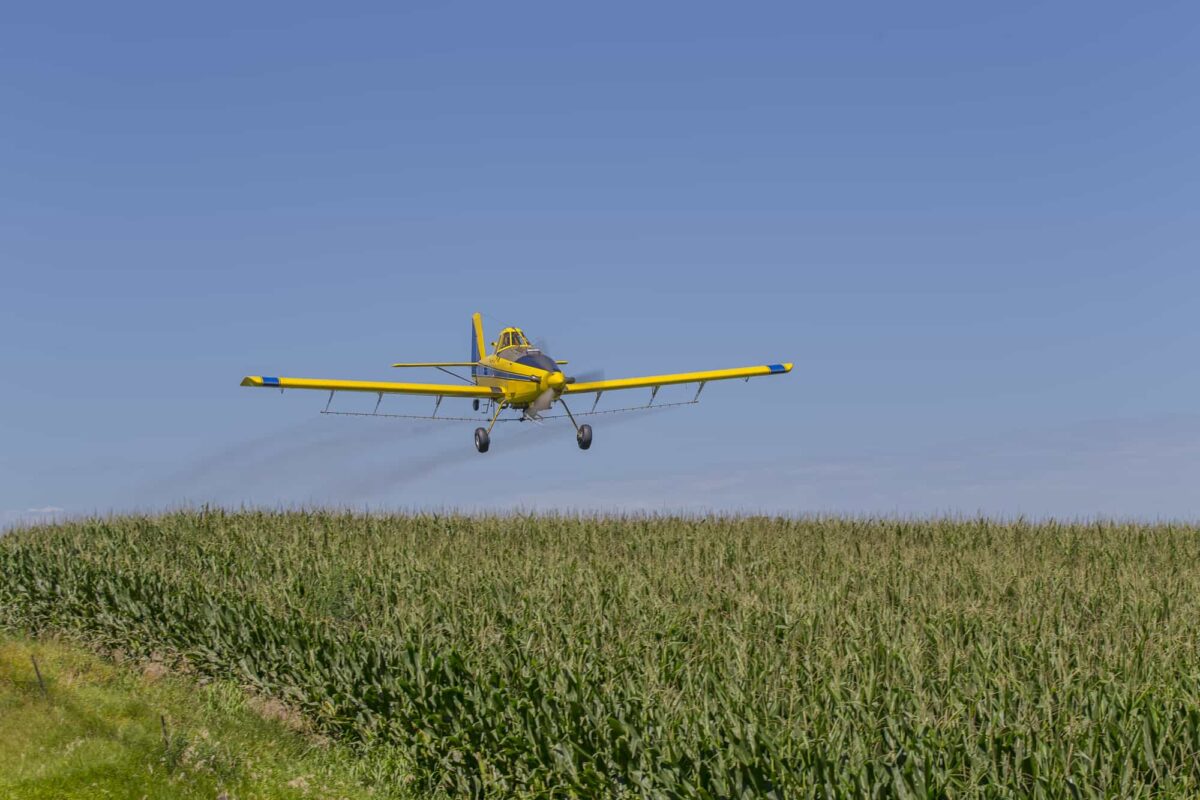What’s the price of a crop duster plane? For those in aviation seeking a profitable venture with a private plane, a crop duster could be a smart choice.
Crop dusting planes range in price from $100,000 to $900,000, reflecting their lightweight design and specialized function.
Unlike most other types of aircraft, crop dusters are designed to fly only at low altitudes. These planes have payloads that include water and pesticides as efficiently and safely as possible.

Table of Contents
How Much Does a Crop Duster Plane Cost? What Do You Need to Know About These Unique Planes?
The cost of a crop duster is one of the most important factors to consider for anyone interested in this agricultural field. Pilots accustomed to flying other types of aircraft will also want to weigh these costs very carefully.
Most planes used for crop dusting are turbine planes. A typical amount of flight time every year for most pilots that fly crop dusters is 500 hours, although the time spent flying depends on the size of the operation.
What is a Sample Cost Breakdown for a Crop Duster?
Although the costs highlighted below are somewhat conservative, the figures are consistent with estimates from JD Dunson, a Texas-based expert in crop dusting.
Crop dusting plane costs
A used, first-class quality turbine plane will average around $650,000. Financing for an aircraft with this price will usually require a 10% down payment. Monthly payments on this type of aircraft have average 5.5% interest rates.
Insurance
Planes used for commercial crop dusting will need to have a liability policy. The average required insurance coverage amount is $26,000, and the average cost of the insurance is about $30,000.
Airframe and engine maintenance costs
Some of the parts of the airframe that require regular maintenance include the GPS, the propellers, and the radio systems. Most mechanics charge about $50 an hour to perform this type of work, while maintenance for the engines used on most crop dusters averages about $65 an hour.
Ground operations costs, including fuel
Ground operations for most crop dusters cost about $25,000 a year. Most of the labor involved with these operations averages $50 an hour.
Ground operations include:
- Fuel, average $1.25 a gallon
- General maintenance
- Repairs for loader trucks
- Trade-ins for pickups every fourth year
Hangar rent and office costs
Unless you have the facilities for a hangar on your property, you’ll need to pay for hangar rent for your crop duster. For a plane the size of most crop dusters, you should expect to pay $50-$300 for hangar rent.
If you rent office space, phone and utility costs might be part of the rent cost. If you operate your business from home, you might be able to have your phone and utility bills at home put under a business account.
Pilot, labor, and management costs
Pilots who fly crop dusters may charge around $300 an hour for their services. You might also need to think about additional insurance costs, such as workers’ compensation.
Is a Crop Duster Business Worth It?
A crop dusting business can be worth it under the right economic circumstances. For example, the agricultural industry saw a boost in demand for services between 2021 and 2022.
Crop duster pilots are in such high demand that farmers and ranchers have to schedule aerial applications several months in advance. If you own a crop duster, regardless of whether you pilot it yourself or hire someone to fly it, you’ll find a healthy demand for your services.
Many crop dusters have started treating larger areas than in 2020-2021. A steady growth in the number of acres requiring treatment will increase the demand for crop dusters.
Crop dusters applied fungicide to 55 million acres of crops in 2021. Farmers want to maximize their profits and are doing everything possible to have healthy crops.
Starting a crop dusting business could benefit you in the long run. A profitable crop dusting business could help you recoup the purchase cost of your aircraft.
Wrapping Up
The cost of a crop duster plane can reach up to $900,000, but the investment opens up significant service opportunities within the agricultural sector.